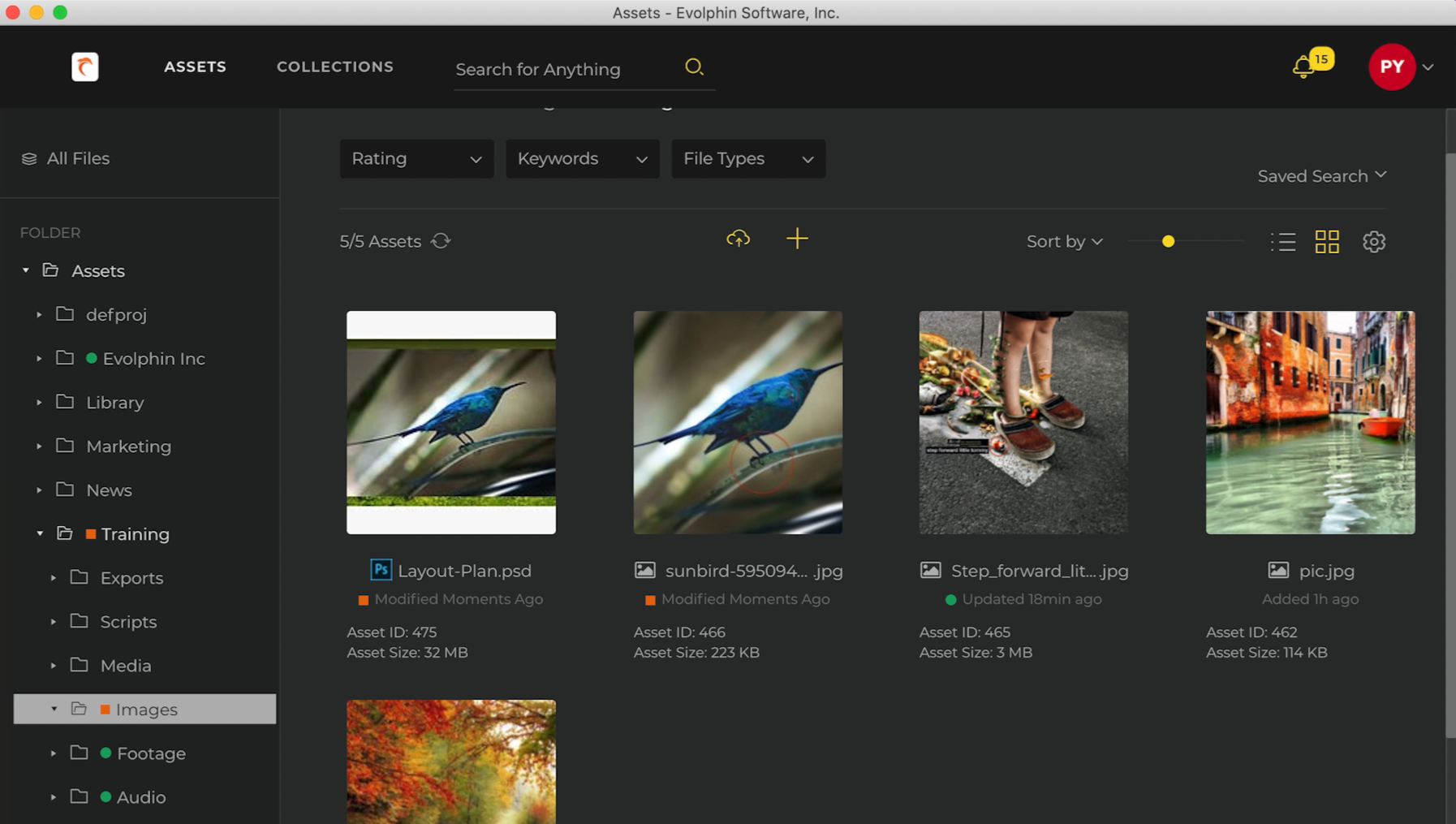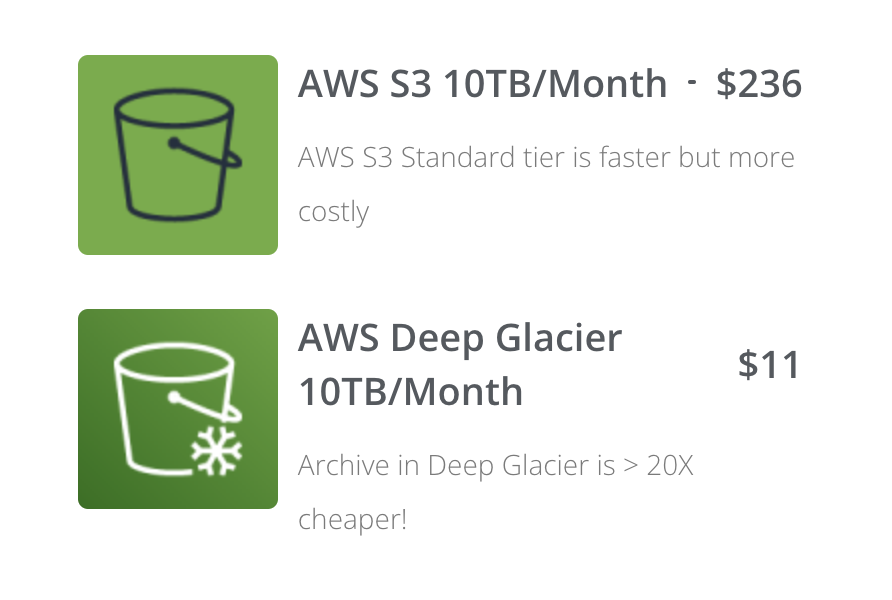Recently, Netflix announced a documentary series featuring retired footballer and style icon David Beckham. According to Netflix, the project will rely on “never-before-seen footage from the last 40 years, as well as modern-day recollections and candid moments” to tell Beckham’s story. Using archival footage for story-telling is not a solitary move on Netflix’s part. Early in 2022, its “Jeen-yuhs” documentary relied on 20 years of archival footage to tell the story of rapper, Kanye West’s life and career.
These examples show how video archives can be profitably mined for compelling programming that creates viewer anticipation and engagement across industries. A wealth of video content (including text, graphics, audio, etc.) locked up in old archives can be repurposed for stellar new programming.
But, can production teams successfully mine these video archives to realize their full potential? Well, it depends. Several media production projects budget heavily (up to $5,000 per minute in some cases) for video archival research and retrieval. If this fails, even more money can be spent re-filming. This expensive gap between existing media and their inclusion in production workflows can only be plugged efficiently with a modern video archive solution. This article will help you understand how video archiving software can help your team become more efficient.
Table of Contents
What is video archiving?
Video archiving is the process of storing, organizing, and managing video files that are no longer in use but still have value. This could range from pre-digital historical footage to a marketing campaign from the past year.
What is the best way to archive video?
The best way to archive video is to use a media asset management (MAM) system. A robust MAM system helps you store, organize and manage vast repositories of archival footage, making life easier for media asset managers, editors, producers, and media operators alike.
What’s wrong with traditional video archiving software?
The demand for video content is rising. And the video production teams meeting this demand are increasingly remote-based. It is not enough to simply introduce previously siloed archives to the digital video production workflow.
Post-production teams now need archiving solutions that help them collaborate and share media securely. This creates a demand for an archive system that can store video content regardless of file format and manage every type of rich media file throughout the production lifecycle.
In the past, media asset managers met this demand by storing old assets in offline servers or tape archives, usually offsite. This is a relatively cost-effective solution, especially with the falling prices of solid-state storage and hard drives.
On the downside, however, recovering targeted data from offline storage solutions is primarily a manual process with several limitations, as highlighted below:
Human dependence
To organize your video files, you would have to create descriptive labels or barcodes to identify the contents of each tape. Then, you would need to organize individual tapes into folders and sub-folders. And for extensive archives, a tape library would come in handy for keeping your content organized and accessible.
Collaboration-averse
Traditional video archiving solutions are prohibitive to remote collaboration as location-bound data requires manual intervention for retrieving critical media assets.
Prone to physical damage
Traditional storage solutions are also subject to mechanical damage leading to a potential loss of valuable media.
So, is there a better alternative for securely organizing your media content to find the specific digital assets you need precisely when you need them?
Modern video archiving software is the answer
Modern media asset management (MAM) systems answer the video archiving question. MAM systems have evolved into workflow orchestration and agile collaboration tools that hold and manage all media assets needed for production.
While modern MAM system capabilities vary on a granular level, they share a common feature: the provision of a flexible, on-premise/cloud hybrid archive system with remotely-distributed video workflows delivered through cloud technology.
Hybrid MAM systems help organizations flexibly optimize their financial overheads, workflows, and delivery capabilities. This means you can control your bandwidth usage by moving selected services to the cloud depending on your technical, economic, and personal constraints.
Modern media asset management systems store and manage large video archives from many sources in one reliable, centralized library.
The growing dominance of cloud technology and artificial intelligence (AI) has also impacted the evolution of modern-day MAM systems, enabling teams to perform tasks rapidly and more efficiently.
A modern media asset management system like Evolphin Zoom MAM ingests content directly into a central repository and uses metadata to manage content outside the library. You can also manage your storage by setting rules to create low-resolution video proxies upon ingest.
Evolphin Zoom further boosts productivity using AI with features like:
- collaborative editing
- centralized content upload from multiple sources and locations
- easy access to content
- AI subtitling
- metadata for content organization and retrieval
- AI-powered tagging with machine learning capabilities
These powerful features give modern video archiving software an edge over traditional systems by introducing more efficiency directly into the video production process.
Best practices for modern-day video archive solutions

The framework created by the Open Archival Information System (OAIS) defines key concepts, processes, roles, and methods for long-term digital preservation and access. While the OAIS model might seem outdated for a post-pandemic world, its core principles still apply. The framework provides a standard set of concepts for various digital preservation functions: ingest, access, archival storage, preservation planning, data management, and administration.
The Digital Preservation Coalition recognizes that best practice standards for preserving digital assets can be either industry-specific or generic.
Industry-specific best practices for archive solutions
For example, Netflix’s best practices are designed to maximize image quality and reduce the likelihood of running into expensive errors when using archival footage for projects.
To achieve this aim, Netflix’s best practice guidelines include:
- Pre-selecting your aspect ratio to ensure consistency from offline to finished project
- Linking proxies to original files to keep editorial decisions non-destructive
- Collaborating with downstream stakeholders/finishing facilities early and often in the editorial process to avoid problems in the interchange from offline to finishing
- Optimal treatment of archival footage.
Generic best practices for archive solutions
On the other hand, more generalized video archiving best practices include
- Backups. Keeping multiple backups of online data archives with remote/cloud-based backups mirroring to additional servers if possible.
- Maintaining data integrity. Regular data integrity checks to prevent archived data from becoming corrupted without noticing.
- Data insight. Understanding the data helps ensure that you have insight into which data should be archived and which requires easy access.
- Compliance. Ensuring that archived videos are kept in compliance with local and international data retention policies pertaining to your industry.
- High provider standards. Choose a credible video archiving solution with built-in checks in place to save you from unrecoverable data loss.
The best practice for modern-day video archiving is a location-agnostic digital or media asset management system that can ingest, process, manage, and retrieve various content types.
How About free video archiving solutions?
A robust video archive is crucial to the production lifecycle of every media project. The wrong video archive solution will cost more in the human labor required to fill the gaps that a competent product would effortlessly fill. Free and freemium video archiving solutions ultimately end up a waste of time and are fraught with limitations:
Size Limitations
The biggest problem with free video archive software is that large video assets quickly usurp free account limits, attracting charges. But it doesn’t end there. In most cases, premium versions of free software tend to perform below expectations. Without key components like metadata capabilities, for example, finding archived media remains as tedious as it was before the upgrade.
Limited Collaboration Capabilities
The collaboration capabilities offered by free video archive software are often non-existent or limited at best, with few supported integrations.
Limited Organization Capabilities
Imagine that your organization publishes five videos daily (or 1,825 a year). Free archiving software solutions won’t provide the workflows and capabilities needed to tag videos and organize them into themed folders for easy retrieval. An unorganized archiving system will ultimately cost more labor expenditure when asset retrieval is considered.
The best video archiving solution is Evolphin Zoom MAM

A robust media asset management solution like Evolphin Zoom is a single point of truth for your video archiving needs, supporting raw footage, audio voiceovers, graphics, and more.
As a next-generation, AI-powered MAM system, Evolphin Zoom goes beyond storage to intuitively recognize information held within media files – face recognition, speech for subtitling, language translation, etc. It also identifies information about media files – formats, codec, etc., which makes for seamless organization, ultimately enhancing the efficacy of your video production workflow.
Offering a modern-day video archiving solution, Evolphin Zoom uses advanced AI features that automate repetitive and otherwise time-consuming tasks. For instance, you can highlight specific sections in audio or video clips, use face recognition to label and find subjects, automatically create subtitles in various languages, and more.
Evolphin Zoom MAM’s capabilities were even pivotal to InterMilan FC’s ability to create a match highlights broadcast generated from archived 1960s soccer matches.
Why Use Evolphin Zoom MAM?
Evolphin Zoom’s advanced features can help your team harness the power of collaborative creativity and increased productivity. Here are some of the top reasons why you should use Evolphin Zoom to archive your video assets:
Interconnected Video Archiving with Automated Rules

Fragmented media asset repositories complicate the task of retrieving media assets when needed, ultimately negating the point of having a rich, valuable archive. Evolphin Zoom makes it easy for you to seamlessly access automatically tiered content across your on-premises LTO tape library, AWS S3, Glacier, and Deep Glacier from one user-friendly interface. To further save time and cost, intelligent tiered archiving replaces manual sorting by automatically tiering content as a background task based on rules you set.
Practical Input Metadata Method
A robust media asset management system does not simply store content. It contextualizes them. Evolphin Zoom enables automatic metadata management to organize files and eliminate tedious metadata entry jobs intelligently.
Deep Glacier Integration

Preview Archived Content
Downloading hi-resolution assets from archives when needed for editing is a financially unsustainable way to work. Evolphin Zoom saves you time and cloud storage cost with the option to preview and edit low-resolution, online-held proxies. This working system minimizes the cost of cloud transfer across a huge variety of file types before restoring high-resolution assets from archives like AWS Deep Glacier.
Evolphin integrates your video archives through your entire workflow
DAM, MAM & PAM Options
Evolphin Zoom provides three unique solutions to suit your needs. Whether you’re a digital manager, videographer, or media manager, Evolphin Zoom has a solution that seamlessly integrates your video archives into your video production workflow. Apart from offering a digital and media asset management solution, Evolphin Zoom also offers the first-ever PAM (Production Asset Management) for optimizing your workflows.
DAM
MAM
PAM
Brand Management
High-res media ingest, transcode proxies
Work-in-progress workflows
DAM users include marketing, agencies, freelancers, executives, end-clients
Media managers, studio operators, producers, videographers
Production users such as editors, creatives, media managers
Search, filter, browse folders, download, upload finished assets
Organize search, archive high-res media
Check-in layered files, Adobe CC projects, Motion Graphics image sequence
Markup, Review & Comment
Scale to multiple storage silos
Full version control, smart link/copy, client-side deduplication
Deduplication
Post-production teams frequently duplicate earlier versions of working files & folders such as when producing a new episode for a show. Duplicating these large native video assets demands tremendous storage space and raises cloud storage prices.
Evolphin Zoom’s built-in front-end deduplication feature solves this problem by allowing you to copy and transfer folders and files with zero bytes of storage.
Intelligent Security
Keep your precious archives secure with Evolphin Zoom’s highly secure server architecture that creates a DMZ around your Cloud Storage or SAN and NAS to protect your content from human error, system failures, malware, ransomware, and other threats. Your valuable media assets also stay protected with in-built cloud backup and disaster recovery.
Accelerated Workflows
Save editors hours of tedious scrubbing by using AI to auto-generate sequences from archived footage. Zoom’s AI-powered video editing capabilities significantly accelerate the post-production workflow, empowering teams to publish video content faster.
Flexible, Rules-Driven AI
AI comes at a high financial cost if not implemented cautiously. Evolphin Zoom allows media managers to set their own rules for using AI. From one central dashboard, you can monitor multiple AI engines with granular insight into your usage metrics to control your spending. Evolphin Zoom’s AI capabilities also enable speech-to-text, face recognition, object identification, and automatic tagging to help your team organize and make the most out of your rich video archives.
Teams Win With Evolphin Zoom

Circle Media
Evolphin Zoom has supported organizations like Circle Media store and manage their priceless video assets more efficiently. Circle Media is a leading TV and OTT streaming channel with a phenomenal library of media assets.
Challenge: The Circle Media team needed to migrate terabytes of media assets from its on-premises archive to the cloud in time for a new video-on-demand (VOD) network launch. With only two weeks to migrate several terabytes of data, the situation was further complicated by the COVID pandemic that enforced remote working on the team.
There were three major challenges involved: migration to the cloud, remote collaboration for content editing, and reliable content delivery to VOD partners.
Solution: By partnering with the Evolphin cloud services team, Circle successfully transferred on-premise content to the cloud using a 100TB AWS Snowball. Automated ingest in the cloud imported the content into Evolphin Cloud in under a day. Evolphin Zoom’s inbuilt hi-res media cloud transfer app enabled easier sharing of camera cards and footage. Finally, media managers could transfer gargantuan video files to VOD cloud partners without EGRESS costs.
Try Evolphin Zoom Today
An efficient video archiving system is critical for unlocking the priceless value hidden away in traditional data stores. Especially for organizations desiring to meet the ever-increasing demand for video content, Evolphin Zoom’s media asset management system is a strategic investment that directly impacts both the quality and speed of content output.
Evolphin Zoom MAM is the best video archiving software for your organization, but that’s not all. Evolphin Zoom goes much further than competing solutions. We don’t stop at offering a central repository of all your media assets but also provide a working solution for ingesting, retrieving, tracking versions, integrating with your critical production stack, and harnessing the benefits of AI prudently.
Additionally, adopting Evolphin Zoom is a breeze as it incorporates technical setup, consultations, and ongoing technical support as part of the package. Want to try out the more innovative way to archive your prized media assets?

